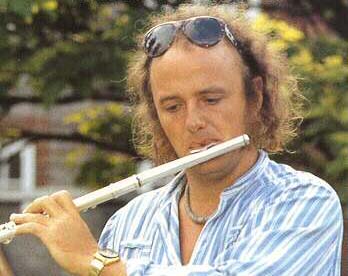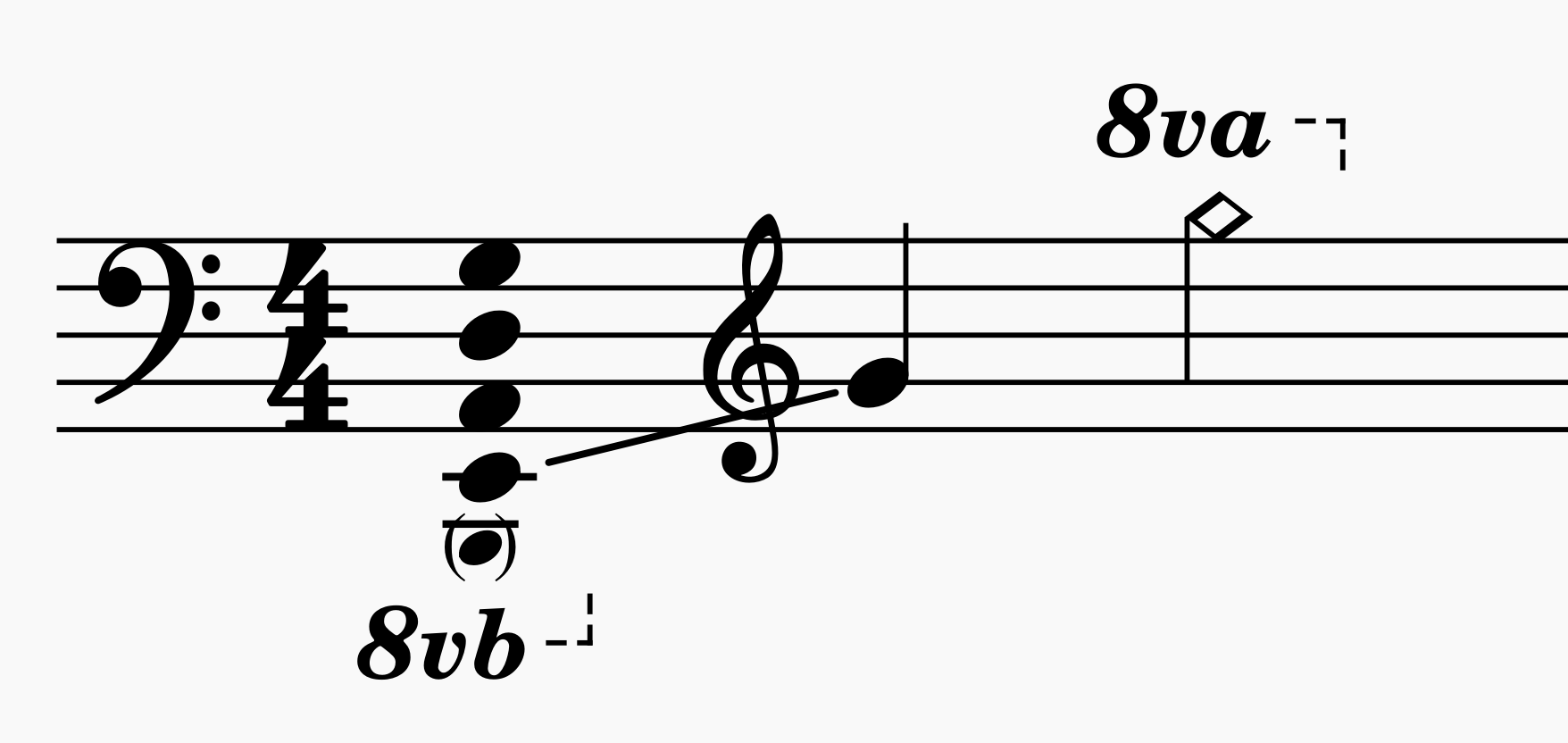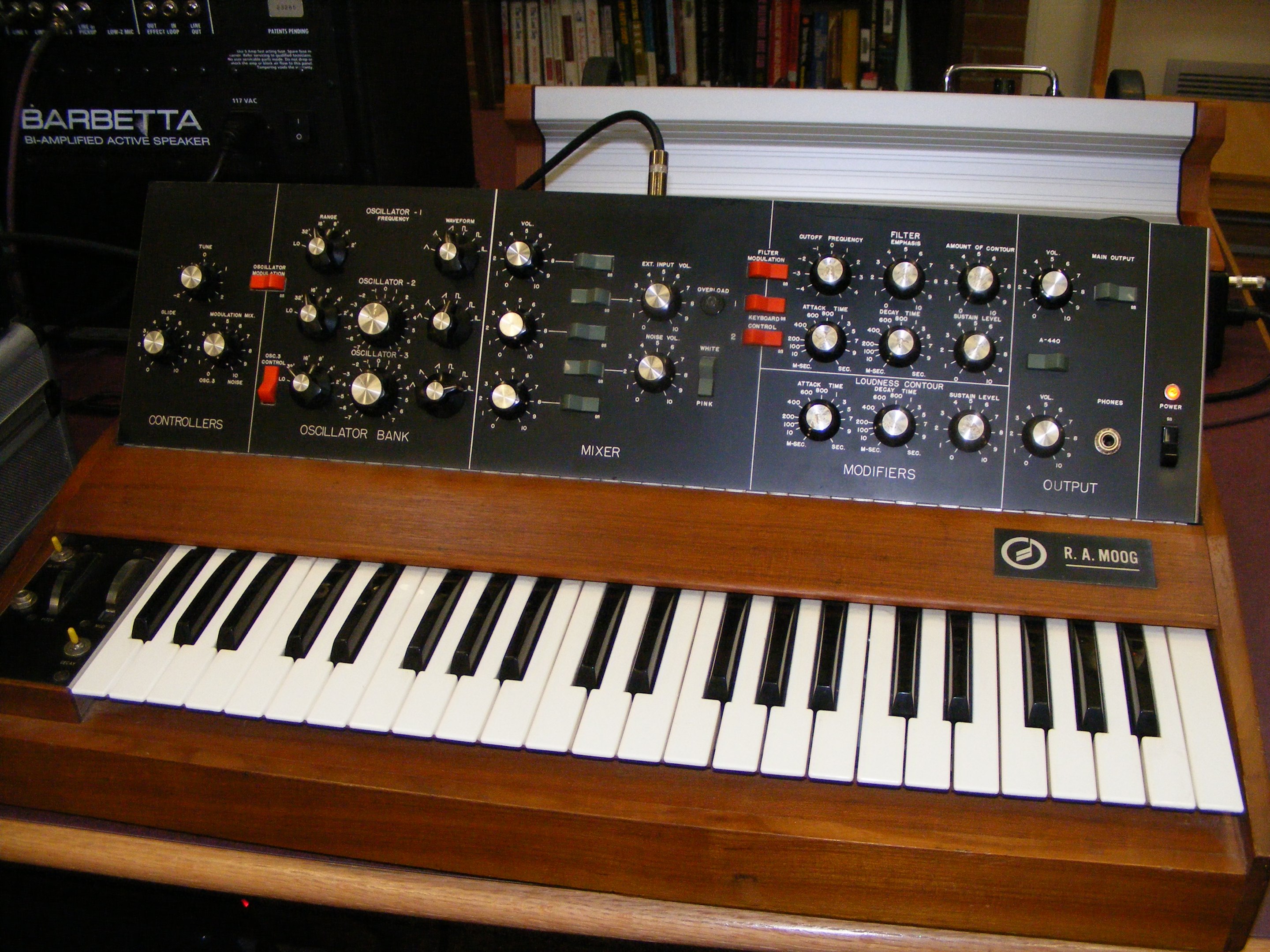|
Mother Focus
''Mother Focus'' is the fifth studio album by the band Focus, released in 1975 on Polydor (cat. no. 2310 408) in Europe, on Atco Records in North America and on EMI in Japan. Some tracks on the album mark a departure from the progressive rock style that dominated the group's prior work, and herald a funk music style with light jazz and pop at the centre. Unlike previous albums, the tracks were also much shorter, the longest being 3:55. Bassist Bert Ruiter provided most of the themes, as van Leer had just recorded a solo album, ''O My Love,'' of his own music, and Jan Akkerman withheld compositions for ''Eli'', his forthcoming album with Kaz Lux. The closing track, "Father Bach", is credited as a 'traditional tune', arranged and adopted by Thijs van Leer, but in reality it consists of the opening lines of J. S. Bach’s ''St. Matthew Passion''. Track listing Track listing of Dutch vinyl release 1975. CD listing Track listing of Japanese release from 16 December 2006. ... [...More Info...] [...Related Items...] OR: [Wikipedia] [Google] [Baidu] |
Focus (band)
Focus is a Dutch progressive rock band formed in Amsterdam in 1969 by keyboardist, vocalist, and flutist Thijs van Leer, drummer Hans Cleuver, bassist Martijn Dresden, and guitarist Jan Akkerman. The band has undergone numerous formations in its history; since December 2016, it has comprised Van Leer, drummer Pierre van der Linden, guitarist Menno Gootjes, and bassist Udo Pannekeet. They have sold one million RIAA-certified albums in the United States. After the addition of Akkerman to Van Leer's rock trio in late 1969, the band named themselves ''Focus'' and initially worked for a Dutch production of the rock musical '' Hair''. Their debut album ''Focus Plays Focus'' (1970) gained little attention but the follow-up, ''Moving Waves'' (1971), and its lead single "Hocus Pocus", earned the band international recognition. Their success continued with '' Focus 3'' (1972) and ''Hamburger Concerto'' (1974), the former containing their second hit single, " Sylvia". After recording two ... [...More Info...] [...Related Items...] OR: [Wikipedia] [Google] [Baidu] |
Thijs Van Leer
Thijs van Leer (pronounced: ; born 31 March 1948) is a Dutch singer and keyboardist, best known as the founding member of the rock band Focus as its primary vocalist, keyboardist, and flautist. Born and raised in Amsterdam among a musical family, van Leer took up the piano and flute as a child and pursued them at university and music academies. From 1967 to 1969, van Leer performed in a theatre cabaret act headed by Ramses Shaffy as his backing vocalist and musician, recorded singles as a solo artist, and produced, arranged, and conducted music for Bojoura. He formed Trio Thijs van Leer, a three-piece rock band which evolved into Focus in late 1969 following the addition of guitarist Jan Akkerman. Focus achieved international success following the release of ''Moving Waves'' (1971) and its lead single, "Hocus Pocus", which features van Leer's yodelling and whistling. After several albums with various line-ups, van Leer disbanded Focus in 1978; he reformed the band in 2002. Van ... [...More Info...] [...Related Items...] OR: [Wikipedia] [Google] [Baidu] |
David Kemper
David Law Kemper (born 1947/8 in Chicago, Illinois) is an American rock drummer who was a member of the Jerry Garcia Band (1983–1994) and Bob Dylan's band (1996–2001). He was with the Jerry Garcia Band from 1983 until January 1994, when he was suddenly dismissed for reasons still unknown to him. He went on to spend five years as Bob Dylan's drummer. Kemper joined Dutch progressive rock band Focus from 1975 to 1977, playing both on the '' Mother Focus'' album and tour. He has played with Mike Stinson, Elkie Brooks, Dennis Wilson (on the ''Bambu'' sessions) and Bernie Leadon. He played double drums with Jim Gordon on Barry McGuire Barry McGuire (born October 15, 1935) is an American singer-songwriter primarily known for his 1965 hit " Eve of Destruction". Later he would pioneer as a singer and songwriter of Contemporary Christian music. Early life McGuire was born in O ...'s "Don't Blame God" from his ''Lighten Up'' album in 1974.Played on Joan Armatrading's 1977 albu ... [...More Info...] [...Related Items...] OR: [Wikipedia] [Google] [Baidu] |
Singing
Singing is the act of creating musical sounds with the voice. A person who sings is called a singer, artist or vocalist (in jazz and/or popular music). Singers perform music (arias, recitatives, songs, etc.) that can be sung accompaniment, with or a cappella, without accompaniment by musical instruments. Singing is often done in an ensemble (music), ensemble of musicians, such as a choir. Singers may perform as soloists or accompanied by anything from a single instrument (as in art song or some jazz styles) up to a symphony orchestra or big band. Different singing styles include art music such as opera and Chinese opera, Hindustani classical music, Indian music, Japanese music, and religious music styles such as Gospel music, gospel, traditional music styles, world music, jazz, blues, ghazal, and popular music styles such as pop music, pop, rock music, rock, and electronic dance music. Singing can be formal or informal, arranged, or improvised. It may be done as a form of reli ... [...More Info...] [...Related Items...] OR: [Wikipedia] [Google] [Baidu] |
Bass Guitar
The bass guitar, electric bass or simply bass (), is the lowest-pitched member of the string family. It is a plucked string instrument similar in appearance and construction to an electric or an acoustic guitar, but with a longer neck and scale length, and typically four to six strings or courses. Since the mid-1950s, the bass guitar has largely replaced the double bass in popular music. The four-string bass is usually tuned the same as the double bass, which corresponds to pitches one octave lower than the four lowest-pitched strings of a guitar (typically E, A, D, and G). It is played primarily with the fingers or thumb, or with a pick. To be heard at normal performance volumes, electric basses require external amplification. Terminology According to the ''New Grove Dictionary of Music and Musicians'', an "Electric bass guitar sa Guitar, usually with four heavy strings tuned E1'–A1'–D2–G2." It also defines ''bass'' as "Bass (iv). A contraction of Double bass ... [...More Info...] [...Related Items...] OR: [Wikipedia] [Google] [Baidu] |
Guitar
The guitar is a fretted musical instrument that typically has six strings. It is usually held flat against the player's body and played by strumming or plucking the strings with the dominant hand, while simultaneously pressing selected strings against frets with the fingers of the opposite hand. A plectrum or individual finger picks may also be used to strike the strings. The sound of the guitar is projected either acoustically, by means of a resonant chamber on the instrument, or amplified by an electronic pickup and an amplifier. The guitar is classified as a chordophone – meaning the sound is produced by a vibrating string stretched between two fixed points. Historically, a guitar was constructed from wood with its strings made of catgut. Steel guitar strings were introduced near the end of the nineteenth century in the United States; nylon strings came in the 1940s. The guitar's ancestors include the gittern, the vihuela, the four-course Renaissance guitar, an ... [...More Info...] [...Related Items...] OR: [Wikipedia] [Google] [Baidu] |
Non-lexical Vocables In Music
Non-lexical vocables, which may be mixed with meaningful text, are a form of nonsense syllable used in a wide variety of music. Common English examples would be "la la la", "na na na" or "da da da". Traditional music Non-lexical vocables are used in yodeling, Blackfoot music and other Native American music, Pygmy music, the music of the Maldives. In Irish traditional music and Highland Scots music, it is called lilting, and in English traditional music it is called diddling. Vocables frequently act as formal markers, indicating the beginning and end of phrases, sections or songs themselves, and also as onomatopoeic references, cueing devices, and other purposes. The Blackfoot, like other Plains Indians, use the consonants ''h'', ''y'', ''w'', and vowels. They avoid ''n'', ''c'' (''ts'') and other consonants. ''i'' and ''e'' tend slightly to be higher pitches, ''a'', ''o'', and ''u'' lower ones. The AIM Song has its origins in the Plains; as such, it holds similar charac ... [...More Info...] [...Related Items...] OR: [Wikipedia] [Google] [Baidu] |
Western Concert Flute
The Western concert flute is a family of transverse (side-blown) woodwind instruments made of metal or wood. It is the most common variant of the flute. A musician who plays the flute is called a flautist (in British English), flutist (in American English), or simply a flute player. This type of flute is used in many ensembles, including concert bands, military bands, marching bands, orchestras, flute ensembles, and occasionally jazz bands and big bands. Other flutes in this family include the piccolo, the alto flute, and the bass flute. A large repertory of works has been composed for flute. Predecessors The flute is one of the oldest and most widely used wind instruments. The precursors of the modern concert flute were keyless wooden transverse flutes similar to modern fifes. These were later modified to include between one and eight keys for chromatic notes. "Six-finger" D is the most common pitch for keyless wooden transverse flutes, which continue to be use ... [...More Info...] [...Related Items...] OR: [Wikipedia] [Google] [Baidu] |
Saxophone
The saxophone (often referred to colloquially as the sax) is a type of Single-reed instrument, single-reed woodwind instrument with a conical body, usually made of brass. As with all single-reed instruments, sound is produced when a reed (mouthpiece), reed on a Mouthpiece (woodwind), mouthpiece vibrates to produce a sound wave inside the instrument's body. The Pitch (music), pitch is controlled by opening and closing holes in the body to change the effective length of the tube. The holes are closed by leather pads attached to keys operated by the player. Saxophones are made in various sizes and are almost always treated as transposing instruments. Saxophone players are called ''wikt:saxophonist, saxophonists''. The saxophone is used in a wide range of musical styles including classical music (such as concert bands, chamber music, List of concert works for saxophone, solo repertoire, and occasionally orchestras), military bands, marching bands, jazz (such as big bands and jazz comb ... [...More Info...] [...Related Items...] OR: [Wikipedia] [Google] [Baidu] |
Piano
The piano is a stringed keyboard instrument in which the strings are struck by wooden hammers that are coated with a softer material (modern hammers are covered with dense wool felt; some early pianos used leather). It is played using a musical keyboard, keyboard, which is a row of keys (small levers) that the performer presses down or strikes with the fingers and thumbs of both hands to cause the hammers to strike the strings. It was invented in Italy by Bartolomeo Cristofori around the year 1700. Description The word "piano" is a shortened form of ''pianoforte'', the Italian term for the early 1700s versions of the instrument, which in turn derives from ''clavicembalo col piano e forte'' (key cimbalom with quiet and loud)Pollens (1995, 238) and ''fortepiano''. The Italian musical terms ''piano'' and ''forte'' indicate "soft" and "loud" respectively, in this context referring to the variations in volume (i.e., loudness) produced in response to a pianist's touch or pressure on ... [...More Info...] [...Related Items...] OR: [Wikipedia] [Google] [Baidu] |
Synthesizers
A synthesizer (also spelled synthesiser) is an electronic musical instrument that generates audio signals. Synthesizers typically create sounds by generating Waveform, waveforms through methods including subtractive synthesis, additive synthesis and frequency modulation synthesis. These sounds may be altered by components such as Audio filter, filters, which cut or boost Audio frequency, frequencies; Envelope (music), envelopes, which control Articulation (music), articulation, or how notes begin and end; and Low-frequency oscillation, low-frequency oscillators, which modulate parameters such as pitch, volume, or filter characteristics affecting timbre. Synthesizers are typically played with Musical keyboard, keyboards or controlled by Music sequencer, sequencers, software or other instruments, and may be synchronized to other equipment via MIDI. Synthesizer-like instruments emerged in the United States in the mid-20th century with instruments such as the RCA Mark II Sound ... [...More Info...] [...Related Items...] OR: [Wikipedia] [Google] [Baidu] |
ARP String Ensemble
The Solina String Ensemble, also marketed as the ARP String Ensemble, is a fully Polyphony, polyphonic multi-orchestral synthesizer with a 49-key keyboard, produced by Eminent BV (known for their ''Solina'' brand). It was distributed in the United States by ARP Instruments from 1974 to 1981. The sounds it incorporates are violin, viola, trumpet, horn, cello, and contrabass. The keyboard uses polyphonic synthesizer#Synths using octave divider, 'organ style' divide-down technology to make it polyphonic. The built-in chorus effect gives the instrument its distinctive sound. Technology The core technology is based on the string ensemble section of the Eminent 310 Unique electronic organ in 1972, manufactured by the Dutch company Eminent BV. The main oscillator consists of twelve discrete tone generators with Frequency divider organ, octave divide-down to provide full polyphonic synthesizer#Synths using octave divider, polyphony (however all notes come from the same envelope and filt ... [...More Info...] [...Related Items...] OR: [Wikipedia] [Google] [Baidu] |


.jpg)



